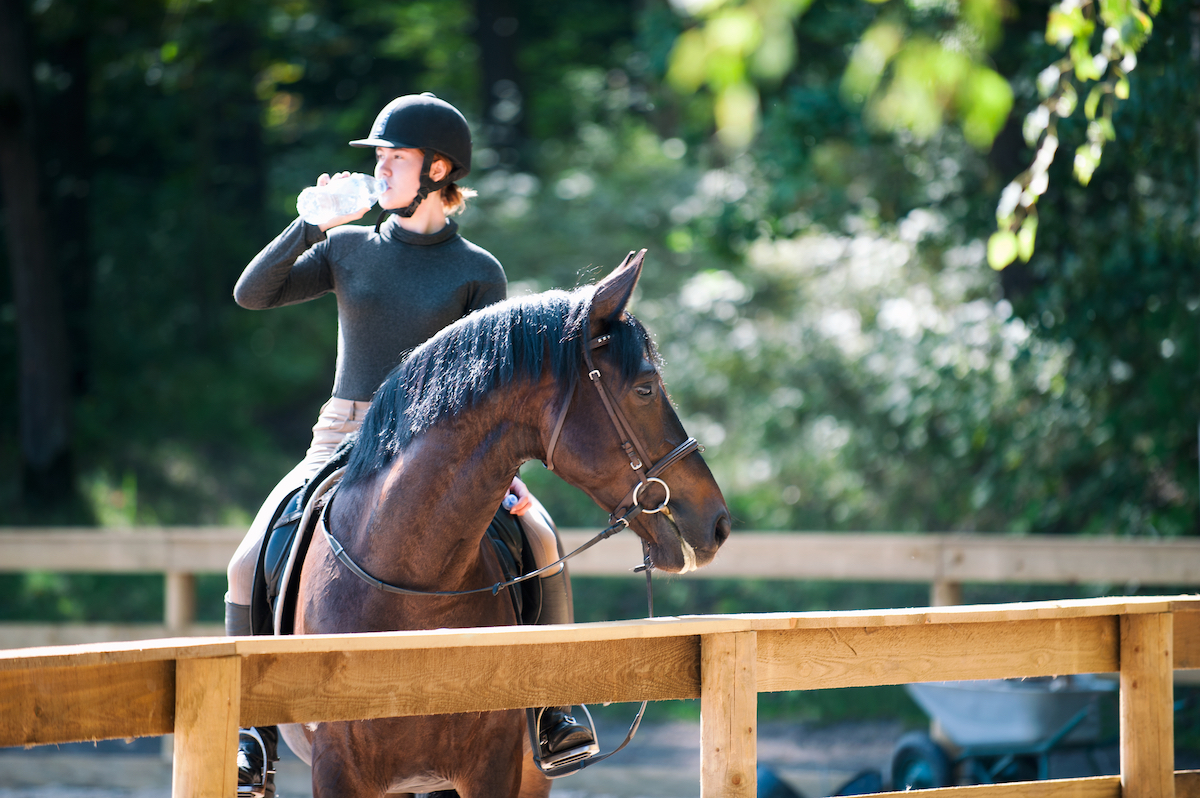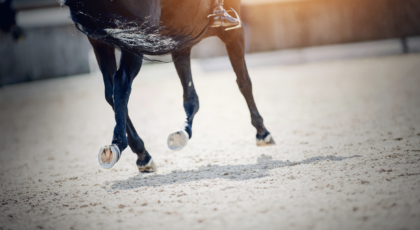Horse people often joke that the barn is a vortex, where “a couple of hours” can easily turn into an entire afternoon and evening. That’s because time at the barn doesn’t end when you get off the horse.
When you’re a kid, this is often referred to as ‘being a barn rat,’ a badge of honor that can range from simply getting dropped off by your parents to hang out at the stable to earning extra rides (and trainer brownie points) by grooming or turning out horses, or even taking shifts mucking stalls in exchange for lessons.
In addition to more time in the tack, most of us loved what being a barn rat gave us: Extra coaching from our trainer, a person who, in many cases, loomed larger than life in our eyes.
However, there can be a darker side to this experience. Unchecked hours spent one-on-one with a trainer or coach can blur boundaries in the relationship, setting the stage for an unhealthy dynamic that can have serious and long-reaching consequences.

‘Family’ Ties
At the core of every coach-student relationship is an innate power imbalance. The coach holds significantly more influence, control, or decision-making authority over the student. In healthy coaching relationships, this imbalance serves to guide the athlete and develop their skills. In unhealthy ones, it can manifest in various forms of emotional abuse, and even escalate to grooming behaviors via a dynamic known as “the family structure.”
“The dynamics at play in the family structure can mirror grooming stages and tactics in terms of how trust, allegiance, and emotional reliance and dependence are leveraged,” explained #WeRideTogether Programs & Partnerships Director Kathryn McClain.
“A coach or mentor may use their authority, similar to that of a parent figure, to blur boundaries under the guise of care or special attention. Their approval becomes something the athlete relies on, making it more challenging to identify harmful behavior. Because this dynamic feels like family, the invasiveness is normalized, and speaking out can feel like betrayal.”
In a barn situation, this might include the use of secrecy and leveraging things a rider cares about—such as desirable horses and extra ride time—to gain compliance for inappropriate behaviors. A well-known example of this structure in equestrian sport is late trainer Jimmy Williams, according to #WeRideTogether Program Manager Annelise Ware.
“[Williams] leveraged his power and prestige to gain the unquestioned authority over athletes and parents alike,” she said. “He created a win-at-all-costs culture that fostered misconduct and abuse, and essentially forced compliance from his riders through threats and emotional manipulation.”
As the family structure progresses, athletes have little to no autonomy or room to self-advocate. The coach-athlete pair becomes so emotionally codependent that their dynamic can sometimes resemble a parent-child relationship.
At the same time, athletes are often isolated within their barns or sporting communities, away from family, friends, and other peers. Coaches are sometimes given unlimited access to monitor and critique their athletes on some of the most intimate details of their lives (think: mental health, weight, sleep, menstrual cycle data, personal relationships, etc.).
In addition, in family-structure relationships, it is not unusual for a coach or trainer to adopt an authoritarian leadership style. Especially in barns, where—given the element of “safety” required when working with 1,200-pound flight animals—this kind of attitude is often already commonplace.
For riders in their barn, and in many cases, their parents, the trainer’s word is the last word, creating a kind of blind loyalty dynamic between coaches and their students. And doesn’t end there.
In some cases, bad actors will use their absolute authority to pit one student against another. According to Ware, this kind of structure can be seen in one of #WeRideTogether’s recent survivor stories, where a skier recounted how five out of 10 of her teammates, including herself, were abused by their coach.
“None of the other athletes knew that abuse was happening to anyone other than themselves,” Ware explained. “The coach’s mental isolation tactics would keep the teammates from speaking with one another, therefore maintaining control over them.”
In both the family structure and grooming, athletes are often left feeling like they can’t say no to the person who’s not only in charge of their competitive success but also acting, in many cases, as a stand-in parent.
But it doesn’t have to be this way…

A Healthier Model
Proper boundary setting from the start can help prevent a family structure from forming in our barns and sporting arenas. Instead of a toxic dynamic, coaches, athletes, and parents can leverage awareness to work toward a healthier “mentor model.”
The mentor model encourages emotional support between coaches and students, but within the standards of appropriate behavior, seeking out external support when necessary. It also helps to foster a culture of accountability, relying on best practices for things like one-on-one interactions and travel to competitions.
Among these are codes of conduct and organized oversight. Codes of conduct help establish and encourage healthy boundaries, while parental oversight and supervision—established through a system of checks and balances within the sporting organization—can further help to prevent abuse.
And while that may sound straightforward on paper, in real time, these dynamics can be tricky to navigate. Since parents are often the ones trying to decipher the subtle distinctions between increased athletic opportunities for their child and proper boundary-setting, McClain has put together a few tips to help parents understand the basics:
- Refer to and talk about the coach/trainer as a professional, not a parent, not a friend, not a confidant.
- Ensure your child or athlete has a safe adult they can talk to. This person may not be you, and that’s ok. What matters is that they have someone they can go to regularly and speak openly and honestly about their relationship with their trainer.
- Get involved and increase your awareness by learning about your child’s or athlete’s coach. Does the coach implement a Code of Conduct? Do their actions fall in line with healthy coach-athlete relationship dynamics?
- Educate your child on safety and preventive best practices, as well as healthy boundaries.
- Guide conversations with your child or athlete to help them build their intuition and awareness. “How do you feel about your trainer? Did anything weird happen at the horse show/barn? How does your trainer react if you make a mistake? How does your trainer treat you and your friends/other students?”
- Listen and observe—is your athlete or their friends referring to the coach as a parent or friend? Does the coach try to keep you and other parents at arm’s length? Does the coach try to seek out 1:1 time with your kid/athlete that isn’t safe or warranted?
“Many of these practices are things parents may already be monitoring—their child’s social media or messaging, interactions with teammates/adults in the sporting space—so it’s just taking it one step further: educating yourself on what is appropriate vs. inappropriate conduct, and monitoring for red flag behaviors,” added Ware.
“Teaching children to self-advocate and having open dialogues about abuse and their sporting environment is helpful in ensuring that athletes feel comfortable saying ‘no,’ and that their voices matter.”
Another simple-yet-key point, according to Ware? Make sure your kid has a life outside of sports.
“It’s easy to get caught up in the rat race, and dedicate all your time to the sport, especially if your child is in elite environments,” she said. “But if they have hobbies or even do anything outside of athletics, it can foster healthy social support outside of sport, which counteracts the codependence and isolation of the family structure.”
In addition, parents and their children are encouraged to check out #WeRideTogether’s recent Boundaries Series, which lays out four, tangible tools that can help young athletes set and keep healthy, mindful boundaries with their coaches, peers, and more.
While a lack of boundaries can be a red flag for abuse, establishing clear expectations from the start can help coaches, students, and parents foster training environments that safeguard a young athlete’s best interests, including the barn rat time that they love.
Want to learn more? Read the complete Boundaries Series on weridetogether.today:


 May 6, 2025
May 6, 2025 

























